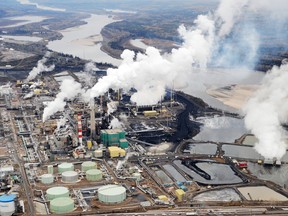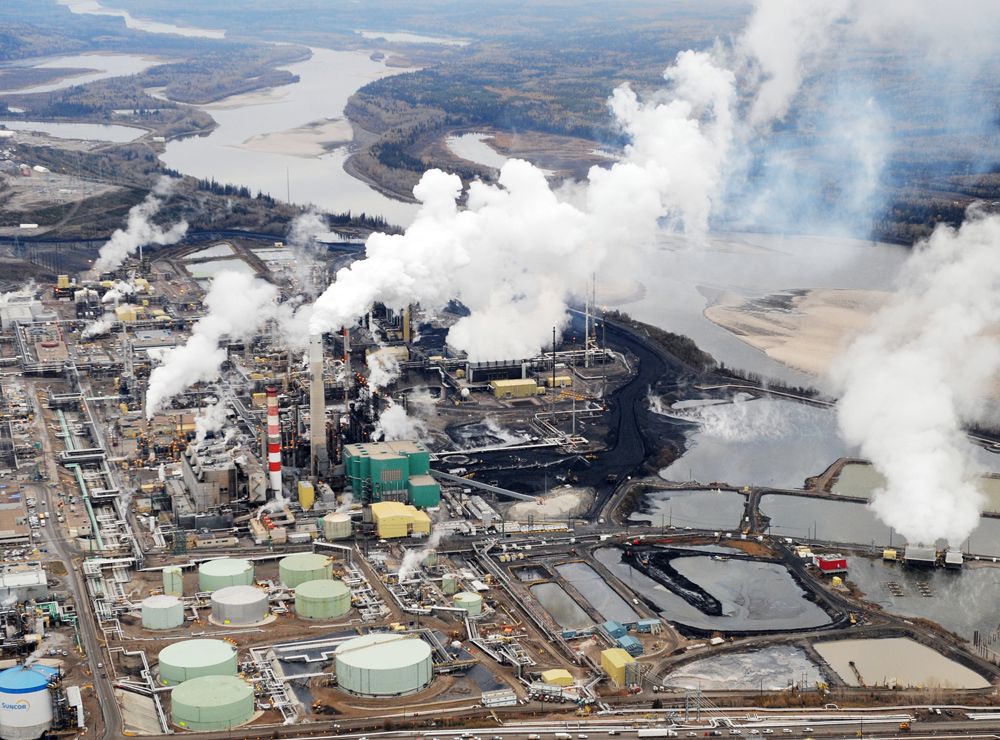Alberta just agreed to comply with Ottawa’s requirement to improve the TIER program to meet federal equivalency requirements

Article content
It’s hard to know exactly where Danielle Smith’s government is headed when it comes to putting together all the pieces of the climate and energy policy puzzle.
Advertisement 2
Article content
The UCP government is about to create its own “made-in-Alberta” climate strategy.
Article content
Yet it only agreed to comply with Ottawa’s requirement to improve the Alberta Technology Innovation and Emissions Reduction (TIER) program to meet federal equivalency requirements.
And while exact details are still unclear, the Trudeau government has previously spelled out that the benchmark carbon price each province must meet will rise to $65 a tonne next year — up from $50 — and eventually climb to $170 by the end of the decade.
Meanwhile, it remains uncertain whether Alberta will officially adopt a net-zero target by 2050 — or a 2030 goal — as part of its new overall climate plan.
Confused? Welcome to the club.
On Friday, the premier spoke to the Calgary Chamber of Commerce and spelled out her opposition to a retail carbon tax from Ottawa that would hit consumers in the pocketbook.
Advertisement 3
Article content
She vowed to continue to “fight” it with the feds, even though the province failed at the Supreme Court of Canada last year to stop the national carbon price.
Her take on Alberta’s industrial carbon pricing program, better known as TIER, is different.
-

Oil sands examining nuclear power as ‘net zero changes everything’
-

Varcoe: Canada’s energy sector sets sights on net-zero oil sands and LNG to secure the future
-

Ottawa to impose federal carbon fuel levy on three new Atlantic provinces
“We wanted to build on what we have with the TIER awards, to make sure we continue to occupy that constitutional space,” she said.
“And we know this is one of the big battles we’re having with Ottawa right now. We hope that we will make some progress.”
Advertisement 4
Article content
On Tuesday, the progress paid off.
The federal government announced it had reached agreements with most provinces, including Alberta, to grant parity agreements to their carbon pricing systems for industrial emissions until 2030, although Ottawa left it up to the provinces to announce the details.
On the consumer front, however, the federal “backstop” carbon price on fuel will remain in place in Alberta. Individuals will receive quarterly payments from the federal government, while next year’s higher carbon tax will add another 3.3 cents per gallon to the price of regular gasoline.

At a news conference, federal Environment Minister Steven Guilbeault praised the province, saying he wanted to “applaud Alberta for their strengthened plan” on pricing industrial emissions, noting it was one of the most vibrant markets for investment in driving clean energy in the country.
Advertisement 5
Article content
And as he now faces political heat for imposing the national carbon fuel levy on three Atlantic counties on July 1, Guilbeault noted that he was able to reach agreements with two Prairie counties on industrial pricing.
“I’m not very popular in Alberta or Saskatchewan, I can tell you that. And yet we were able to quickly come to an agreement with these provinces,” he said.
“They really wanted to ensure that they could have their own system and work towards that goal. And it happened.”
And what did Alberta and Ottawa agree to?
The TIER program requires regulated large industrial facilities to reduce emissions intensity from their historical performance, either below a facility-specific benchmark, or from the level of top performing facilities within their industry.
Advertisement 6
Article content
Facilities that outperform their requirements can generate credits.
Those who do not meet the mark can pay into the TIER fund this year at a level of $50 per ton of carbon dioxide equivalent.
Industry and environmental groups welcomed Tuesday’s announcement as they waited for clarity on the future of TIER and where industrial carbon pricing is going – and how it will affect investment.
“It does remove uncertainty,” says Tristan Goodman, president of the Explorers and Producers Association of Canada.
“Carbon pricing is always a challenge for everyone to manage, but when the federal government allows flexibility for each province, it’s very positive.”
Scott Crockatt of the Business Council of Alberta called the news constructive, saying Tuesday’s agreement will let the province decide where to spend money raised through the program, such as investing in innovation.
Advertisement 7
Article content
Simon Dyer, deputy executive director of the Pembina Institute, said the announcement is positive as it indicates Alberta has agreed to strengthen its industrial carbon price, although he wants to see the fine details.
The federal and provincial governments seem to be getting along, at least on the TIER issue.
But what about adopting a net-zero emissions target by 2050, mirroring the federal target?
In an interview Friday, I asked Smith if the province would accept a net-zero goal.

“We are already seeing how our large industry is developing the target of carbon neutrality and we are going to support it,” she said.
With an agreement on TIER in place, the next big puzzle piece surrounds the province’s new climate plan.
Advertisement 8
Article content
Environment Minister Sonya Savage, who recently returned from the COP27 climate summit, noted that developing the strategy is one of the top priorities in her new mandate letter.
And will the plan have real targets in place to reduce emissions?
Savage said she could not say yet, as the plan must go through a process including consultations with industry, environmental organizations and academics.
“You can’t put the cart before the horse until you do the consultation. . . Because one thing (is) certain — it doesn’t help anyone to commit to targets and timeframes that you can’t achieve,” she said.
“So it’s too early to say.”
Whatever the plan includes, it must be comprehensive since Alberta has the highest overall emissions among the provinces, Dyer said.
“To be seen as credible on climate change, there is a need for a 2030 target and a 2050 target – and policies and procedures to get you there,” he added.
“Alberta is late to the party to have a climate plan.”
Chris Varcoe is a Calgary Herald columnist.
cvarcoe@postmedia.com

